As pointed out by Lippeveld, Sauerborn, and Bodart (2000), the World’s Health Organization has described healthcare information systems as a critical factor required to ensure the health of the population at the beginning of the 2000s. besides, the experts of the organizations noted that in the contemporary world, information is a very important key aspect present at all levels of management that needed to be treated appropriately for better health system planning (Lippeveld, Sauerborn, & Bodart, 2000). As a result, the management and use of information were established as the primary task for the providers of health care.
The Broad Category of HIT Chosen
One of the broad categories of health information technologies is laboratory information systems also known as LIS. These systems are the core of the operations held at the clinical laboratories. Sepulveda and Young (2013) recognize LIS as the “essential to manage the flow of information between health care providers, patients, and laboratories” (p. 1129).
Today, the future role of the laboratory information systems is widely discussed by the healthcare professionals and researchers in terms of the expansion of their capacities and the engagement not only in the laboratory operations but also about the improvement of clinical care (Sepulveda & Young, 2013). The functionality of LIS is viewed as adjustable through the use of extension and additions to LIS that allows the integration of the latter in a variety of setting outside the laboratory tasks (Tuthill, Friedman, Balis, & Splitz, 2014).
The Four Phases of the HIT Systems Life Cycle
There are four main steps in the life cycle of the HIT systems; these steps serve as the basic plan for the organization, planning, implementation, and management of the systems (McCartney, 2010). The cycle diagram below presents the steps.
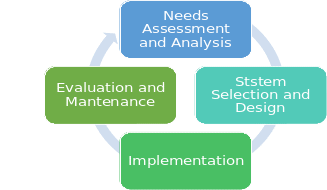
In turn, each of the phases can be presented in the form of an individual cycle as they involve a series of various tasks and activities.
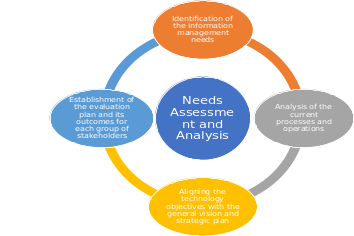
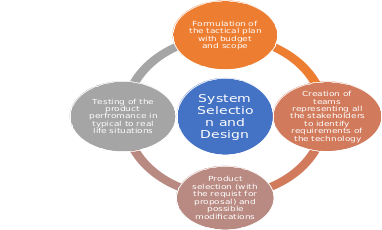
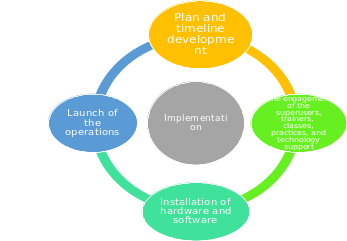
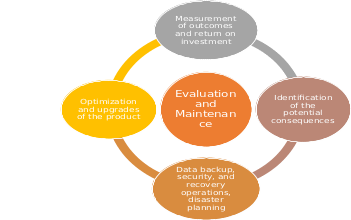
Needs Assessment and the Effects with Other Systems
Needs assessment step is the first in the HIT life cycle. This step is complicated by the integration of the systems and their connection to one another. That way, making a change such as upgrading or replacing one of the systems will inevitably affect the other systems as well (Tuthill, Friedman, Balis, & Splitz, 2014). That is why the analysis of the current processes and operations is one of the initial tasks within the needs assessment process.
In particular, when applied to the laboratory information systems, the process of needs assessment may affect EWS (Enterprise-wide solution) strategy and the systems handling EHRs (Tuthill et al., 2014). Besides, the last assignment within needs assessment is the establishment of the evaluation plan and its outcomes for each group of stakeholders; and this means that many groups of people with various needs are going to be involved in the selection of the LIS which potentially may become one of the major challenges for this step.
Key Members of the Steering Committee and Why They Are Important
Any HIT steering committee is to be a diverse group of professionals who are likely to be affected by the upcoming change in the systems. The committee needs to have a chairman – an unbiased professional able to take charge of the project impartially; besides, the committee needs the project manager – the coordinator of all the activities within the project.
Also, the committee should include the representatives of the departments directly involved in the use of the systems (in the case of LIS these are the laboratory workers, physicians, and nurses). Moreover, the IT staff is to be included in the committee as the maintenance professionals. Finally, the parties that could sometimes become involved in the decision-making of the committee are the HR representatives, the trainers, financial officers, and legal counsels.
A Strategy for Selection of a Product
Selecting a HIT system, the professionals are to decide whether the system should be created specifically for their organization’s needs or a ready-made product could be purchased and adjusted accordingly. Both of the strategies have their advantages and disadvantages which differ from one organization or sphere to another. Besides, the team of diverse professionals representing all the stakeholder groups involved in the work with the systems under evaluation is to evaluate its various components.
For instance, in the case of LIS, such aspects as data entry, sample scheduling and tracking, personnel and equipment management, and maintenance need to be the primary elements for evaluation (Paszko & Pugsley, 2000). Some additional factors are the comprehensiveness and ease of use of the systems and their capacity to be integrated.
Potential Training Needs of End Users
Just like any change and innovation in any organization, the launch of the new HIT system requires the preparation of the staff. For that, the leadership is to assign a budget since the training sessions are going to have costs in terms of time and capital. That way, all the end-users of the new product are to be trained appropriately. Insufficient training may harm the operations related to HIT and create threats to the safety of staff, information security, equipment performance, and the overall workflow.
Conclusion
The process of selection and implementation of HIT systems is multifaceted and complex. The project managers are to complete four main steps each of which includes several stages as well. Moreover, such projects are the change of HIT systems involve many stakeholders and require multiple evaluations, assessments, adjustments, and reviews.
The success of such a complicated project is achieved only under the circumstances of careful consideration of all the advantages, disadvantages, expected outcomes, and stakeholder needs. Besides, even after the planning, preparation, selection, and implementation steps are finished. The organization is to ensure the maintenance of the change via the provision of the appropriate training for the staff for them to accommodate the systems easier and faster.
References
Lippeveld, T., Sauerborn, R., & Bodart, C. (2000). Design and implementation of health information systems. Paris, France: World’s Health Organization.
McCartney, P. R. (2010). What Is the HIT Systems Life Cycle? Health Information Technology, 88, 301.
Paszko, C. & Pugsley, C. (2000). Considerations in selecting a laboratory information management system (LIMS).
Sepulveda, J. L. & Young, D. S (2013). The Ideal Laboratory Information System. Archives of Pathology & Laboratory Medicine, 137(8), 1129-1140.
Tuthill, J. M., Friedman, B. A., Balis, U. J., & Splitz, A. (2014). The laboratory information system functionality assessment tool: Ensuring optimal software support for your laboratory. Journal of Pathology Informatics, 5(7), 1-10.